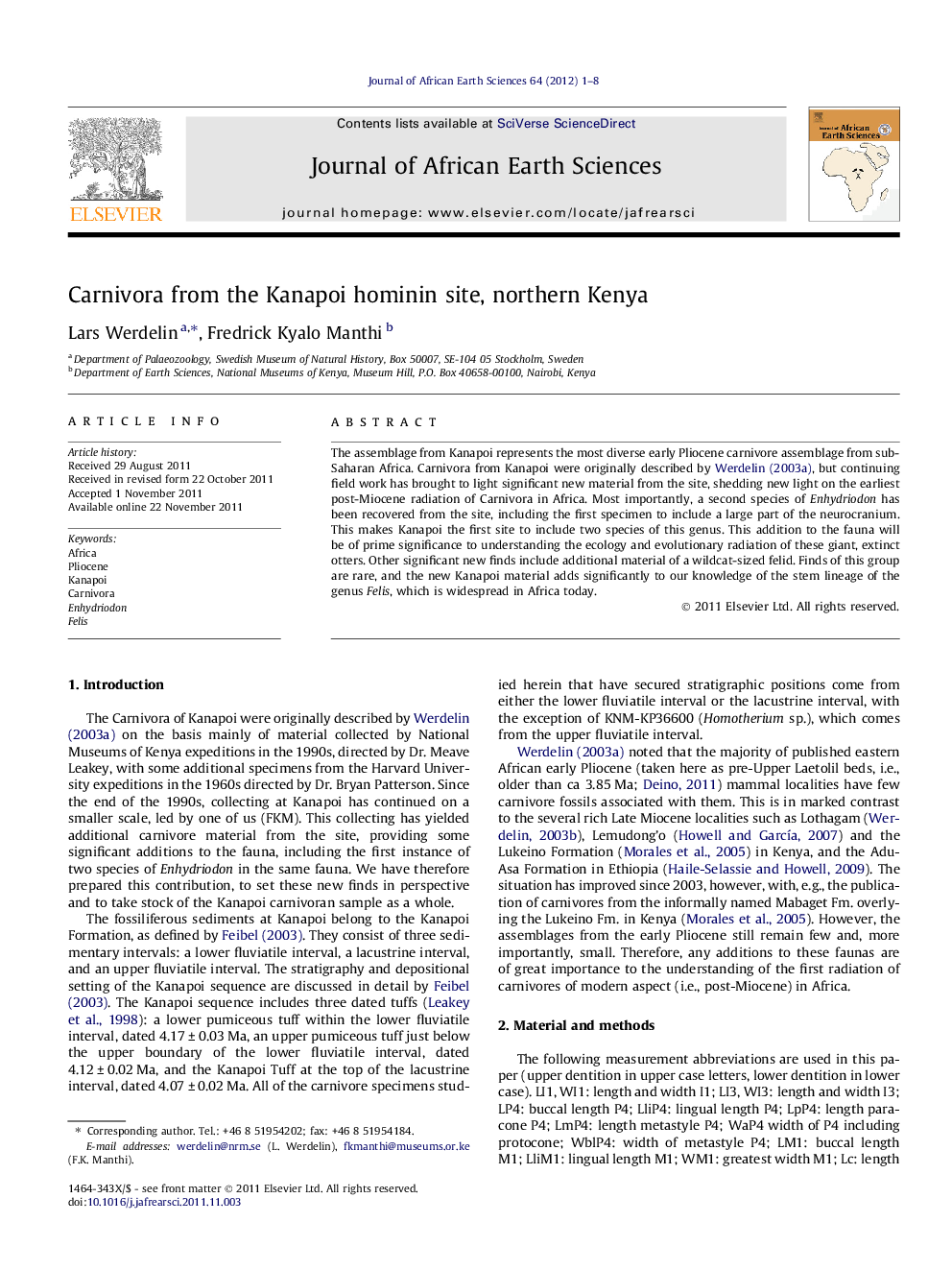| کد مقاله | کد نشریه | سال انتشار | مقاله انگلیسی | نسخه تمام متن |
|---|---|---|---|---|
| 4729056 | 1640239 | 2012 | 8 صفحه PDF | دانلود رایگان |

The assemblage from Kanapoi represents the most diverse early Pliocene carnivore assemblage from sub-Saharan Africa. Carnivora from Kanapoi were originally described by Werdelin (2003a), but continuing field work has brought to light significant new material from the site, shedding new light on the earliest post-Miocene radiation of Carnivora in Africa. Most importantly, a second species of Enhydriodon has been recovered from the site, including the first specimen to include a large part of the neurocranium. This makes Kanapoi the first site to include two species of this genus. This addition to the fauna will be of prime significance to understanding the ecology and evolutionary radiation of these giant, extinct otters. Other significant new finds include additional material of a wildcat-sized felid. Finds of this group are rare, and the new Kanapoi material adds significantly to our knowledge of the stem lineage of the genus Felis, which is widespread in Africa today.
► Kanapoi is the richest early Pliocene carnivore assemblage in sub-Saharan Africa.
► The most abundant species is Parahyaena howelli, which likely denned in the area.
► Kanapoi is the only African locality with two species of the giant otter Enhydriodon.
► Kanapoi marks the first radiation of carnivorans in Africa after the Miocene.
Journal: Journal of African Earth Sciences - Volume 64, 14 February 2012, Pages 1–8